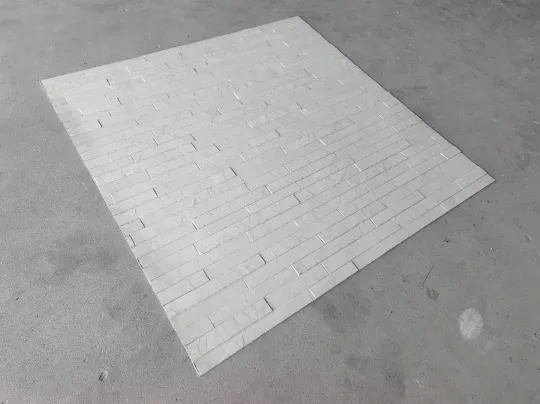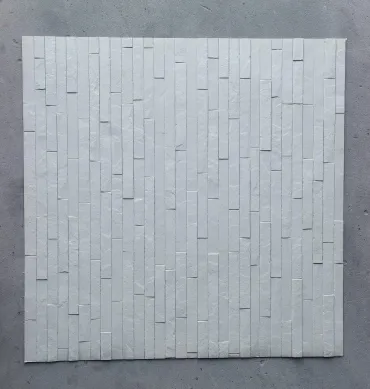
Best Masonry Stone Brands for Modern Buildings

The ultimate guide to choosing durable, beautiful stones that bring architectural visions to life
The Stone Renaissance in Modern Architecture
Stone isn't just for medieval castles or ancient pyramids anymore. We're witnessing a stone renaissance in contemporary architecture where natural materials meet sleek, modern designs. Architects are turning to stone to create buildings that feel grounded yet innovative - structures that whisper permanence in our fast-paced world.
What's driving this revival? For starters, modern stone applications have evolved far beyond the blocky constructions of yesteryear. Today's masons collaborate with designers to create breathtaking architectural facade solutions – including sophisticated stone veneers and innovative cladding systems that would make Michelangelo do a double-take. And with sustainable building practices gaining traction, stone's low carbon footprint compared to synthetic materials makes it an eco-champion's dream.
Why stone rocks modern architecture:
- Timeless appeal that outlasts design trends
- Natural thermal properties that reduce energy costs
- Low-maintenance longevity that pays for itself
- Unique character you can't replicate with synthetics
- Sustainable credentials with minimal processing

The Modern Mason's Toolkit: Stone Showdown
Granite - The Indestructible Classic
The Humvee of building stones, granite laughs at weather, time, and heavy foot traffic. It's the go-to for buildings that need to scream strength without shouting. Modern architects love playing with its speckled patterns - imagine a corporate headquarters where natural granite veins echo the company's organizational chart. It's not just for banks and government buildings anymore; we're seeing granite make surprise appearances in boutique hotels and avant-garde residential projects.
Why architects adore it:
- Harder than your contractor's deadline pressure
- Rain or shine performance with zero drama
- Gets better with age like fine wine
- Endless color variations to match any mood board
The small print:
- Budget-buster alert – save this for wow-factor applications
- Heavy enough to make your structural engineer sweat
- Requires specialty tools for cutting and shaping
Basalt - The Stealthy Sophisticate
Born from volcanic tantrums, basalt brings that cool, moody vibe to contemporary designs. It's the architectural equivalent of a black turtleneck – effortlessly chic and minimalist. The tiny holes that pepper its surface create fascinating shadows throughout the day, turning building façades into giant sundials. Top-tier design firms are using textured basalt panels to create sensory-rich environments where the building literally changes personality as clouds pass overhead.
Why it's trending:
- Ignores weather extremes like a Nordic stoic
- Easier on budgets than flashier stones
- Modernist dream with its sleek dark tones
- Perfect for that seamless indoor-outdoor flow
Handle with care:
- More prone to chips than a poker table
- Needs regular TLC to avoid erosion
- Limited color palette stays in dark territory
Limestone - The Versatile Charmer
Think of limestone as the chameleon of building materials – equally at home in a cutting-edge museum or a cozy cafe. Its softness makes it a sculptor's canvas, perfect for buildings that need custom detailing without breaking the CNC machine. Recently, forward-thinking designers are pairing creamy limestone with industrial steel elements, creating conversations between rugged and refined. It's the stone equivalent of wearing a tuxedo with sneakers - unexpectedly cool.
Why developers choose it:
- Cost-friendly without looking cheap
- Easy to work with for custom projects
- Soft natural glow that ages beautifully
- Thermal properties that reduce HVAC costs
Watch outs:
- Stains like white pants at a barbecue
- Wears its history through erosion patterns
- Not for high-impact applications
Masonry Magic: Making Stone Work Today
Contemporary stonework isn't just about stacking rocks anymore. We're seeing game-changing techniques that make stone more accessible, affordable, and innovative than ever. Thin stone veneers, for instance, deliver classic looks with modern performance, perfect for retrofitting existing structures without overloading foundations. Imagine updating a 1970s office building with dramatic granite cladding that makes it look like a brand-new landmark.
Digital fabrication has revolutionized stone masonry too. CNC machines turn giant stone blocks into precision pieces faster than you can say "blueprint," creating opportunities for architectural stonework that would make traditional masons weep with envy. Computer modeling helps teams visualize exactly how different stones will play with light throughout the day and seasons, ensuring material choices hit design objectives perfectly. This synergy of ancient materials and digital innovation creates truly contemporary architectural facade solutions.
The Practical Side: Stone for Real Life
Let's talk numbers and nitty-gritty. Choosing stone isn't just about aesthetics; it's about solving real-world building challenges. In earthquake zones, flexible anchoring systems allow stone cladding to withstand tremors. Coastal properties benefit from salt-resistant choices like granite that laugh at corrosive sea air. And for high-traffic urban locations? Basalt's near-indestructible nature stands up to anything city life throws at it.
Maintenance surprises no one with stone. Unlike trendy facades that need constant attention, stone asks for surprisingly little. Occasional washing, spot sealing every few years, and enjoying how it naturally evolves over time. Budgeting requires nuance - while granite might cost more upfront, divide that premium across centuries rather than decades for true value perspective. And sourcing? Local stone reduces both carbon footprint and costs, creating distinct regional architecture.
Stone FAQ: Real Questions from Builders
Will stone exteriors turn my building into a medieval fortress?
Only if you want them to! Contemporary stone applications range from whisper-thin veneers to sculptural installations that dance with light. Modern cutting techniques let stone bend, curve, and create illusions that defy its inherent weight.
Is stone really environmentally friendly?
Compared to synthetics? Absolutely. Stone requires minimal processing, no nasty chemicals, lasts generations, and comes straight from the earth. Just transport thoughtfully – local sources dramatically reduce carbon footprint.
What's the biggest mistake with stone selection?
Forgetting the human element. Stone is a sensory experience. Visit actual quarries, touch full-size samples in different lighting conditions, see weathered examples. Blueprint decisions can't capture how sunlight turns limestone golden at sunset.
Can stone ever feel contemporary?
Watch any high-end design studio lately? Stone is having a renaissance precisely because it grounds modern designs. Nothing offsets glass and steel quite like textured stone. The tension creates architectural interest you can't buy any other way.
The Stone Age Never Ended
After exploring today's remarkable stone options, one truth stands out: humanity's love affair with stone isn't nostalgia – it's practical poetry. In an age where materials come and go faster than TikTok trends, stone offers the rare combination of integrity and adaptability. The real magic happens when we respect stone's ancient wisdom while applying contemporary creativity.
So whether you're designing a sleek downtown office tower or a cozy hillside retreat, remember that stone isn't a constraint but a collaborator. The best modern buildings aren't fighting geology but dancing with it. They honor the mountain's gift even as they point toward the future. That timeless dialogue between human vision and earthly permanence? That's where truly great architecture lives.
Tags:
Recommend Products











